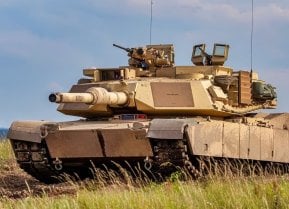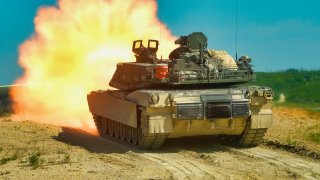Pictures: How Ukraine’s New Tank Armor is Changing Drone Warfare
Ukraine has adopted advanced protective measures for main battle tanks (MBTs) to counter drone threats on the frontlines, moving beyond makeshift solutions to purpose-built armor.
What You Need to Know: Ukraine has adopted advanced protective measures for main battle tanks (MBTs) to counter drone threats on the frontlines, moving beyond makeshift solutions to purpose-built armor.
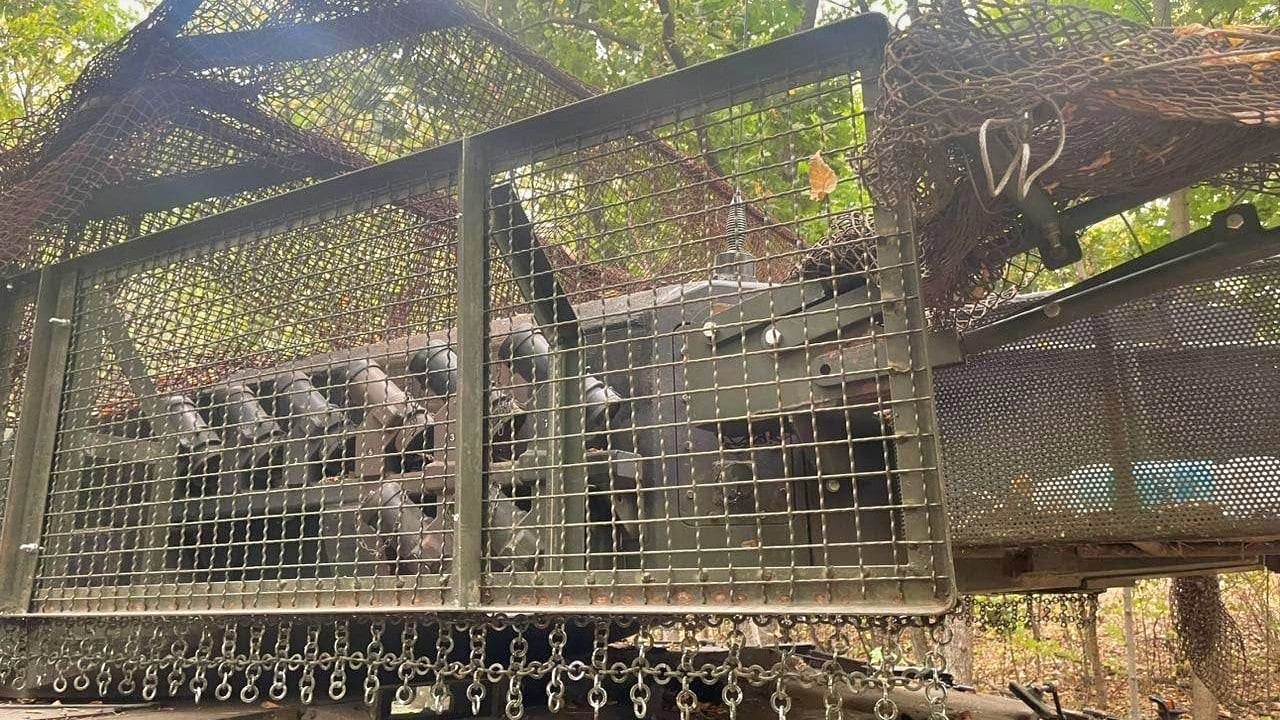
-Developed by Metinvest under Rinat Akhmetov's Steel Front initiative, these steel screens shield vulnerable areas like engines and ammo compartments from explosives dropped by drones.
-Unlike DIY options, these screens use high-grade steel for optimal strength without impairing tank maneuverability or visibility. While installation is complex, frontline reports indicate a 30-40% increase in vehicle survivability, allowing crews to survive attacks and evacuate safely. The protective screens may redefine MBT resilience in modern warfare.
Steel Screens for Tanks: Ukraine’s Answer to Drone Threats
Ukraine's Steel Front Takes Shape: The use of drones and other unmanned aerial systems (UAS) in Ukraine has changed the role of the main battle tank (MBT) – where the powerful behemoths can be all too easily targeted, disabled, and even destroyed. Both Moscow and Kyiv have looked at ways to increase the survivability of their MBTs, and that has included ad hoc solutions that include netting, strapping wooden logs to the side, and notably welding "cope cages" over the turret and engine compartments.
However, those ad hoc solutions have given way to more carefully planned options, and Ukraine has been looking to utilize more carefully planned protection. This has included specially-designed protective screens – developed by Metinvest, and based on the framework of Rinat Akhmetov's Steel Front. The screens were meant to help counter drones and even explosive devices that are now being used on the frontlines.
"The primary objective of these screens is to save the lives of soldiers. Additionally, they protect the most vulnerable parts of the vehicles, such as the engine and ammunition, from attacks from above, as drones often drop explosive devices from this trajectory," explained Oleksandr Myronenko, chief operating officer of Metinvest Group.
He told The National Interest that the screens were designed to block or reduce the impact of explosives dropped by drones. Each screen can be installed directly on the vehicle and provide protection both in combat and while stationed in shelters. Sandbags or netting are also used only when storing vehicles in fixed positions.
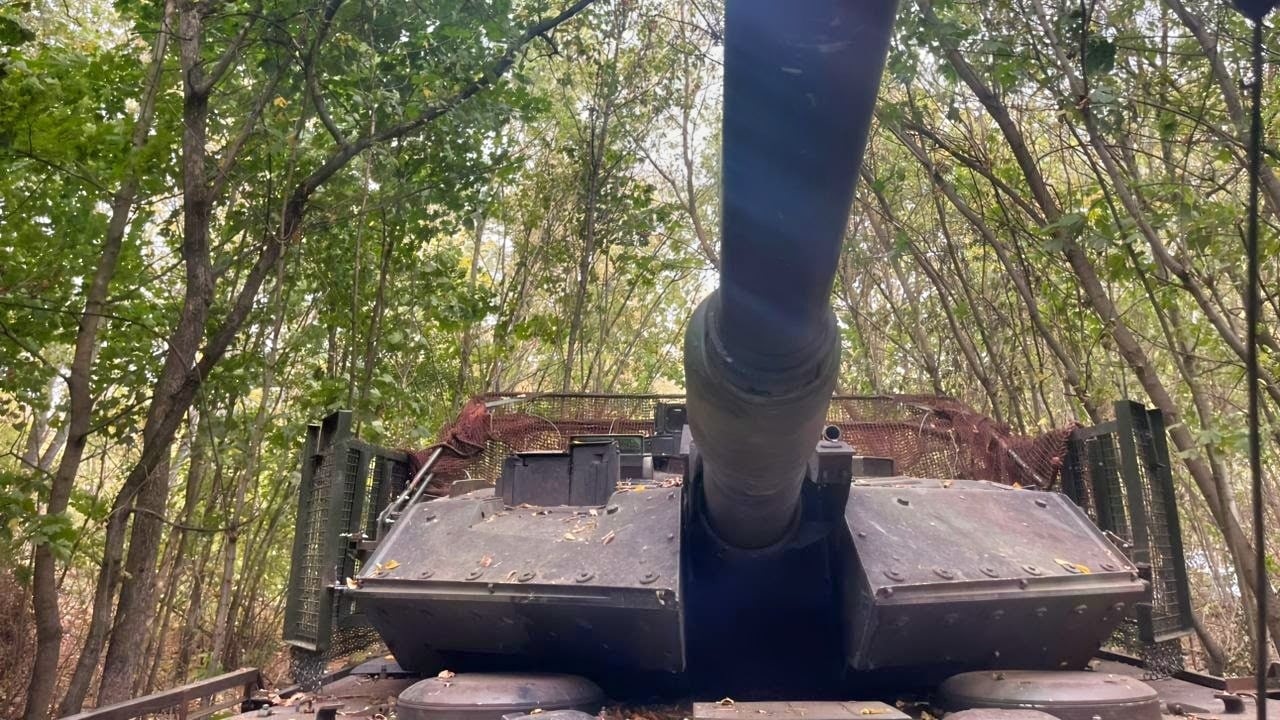
"The screens are made from high-quality steel, which increases their resistance to explosions," said Myroneko. "Simple DIY methods, like homemade metal grids, cannot always achieve the same level of strength or consistent protection."
As the adversary's primary goal is to immobilize the vehicle first and then destroy it if possible, most of the drones and loitering munitions that the Kremlin's forces are employing have been tasked with rendering a tank immobile.
"Our screens function as nets that prevent drones from making contact with the vehicle’s body," added Myroneko. "This helps to protect both the vehicle and its crew."
Not a Frontline Application
The first cope cages appeared just months after Russia launched its unprovoked invasion of Ukraine in February 2022. Drones proved to be an unexpected game changer for Kyiv, and dozens or perhaps even hundreds of Russian tanks were subsequently targeted.
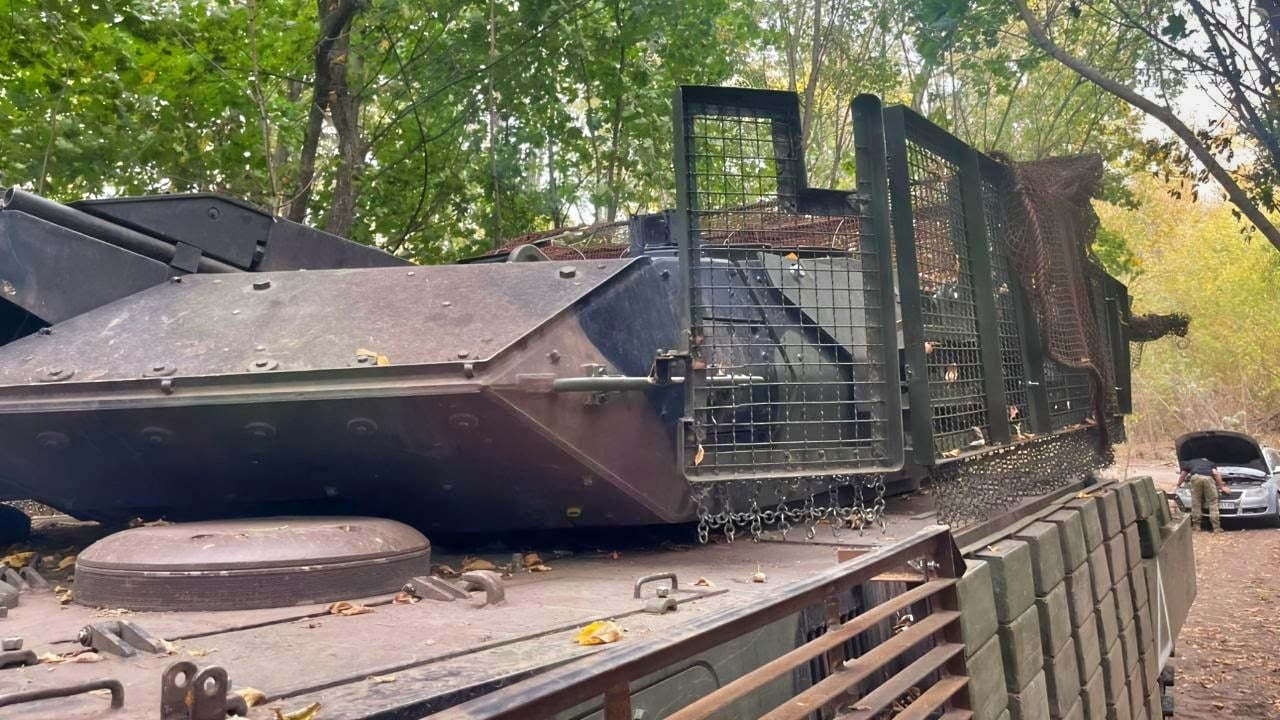
Russian troops took those ad hoc measures, but in some cases, it impacted the operations of the tank and even diminished some capabilities. The Steel Front screens developed by Metinvest were designed to provide added protection without compromising the vehicle's fighting abilities.
The only downside is that it can't be installed at the front. More than just a welder and a few tools are required. But the results can pay off quickly.
"Depending on the vehicle model – including the Abrams, Bradley, Leopard, etc. – installing a screen takes a team of 10–12 people approximately 12 hours on average," said Myroneko. "This includes securing the screens, testing compatibility, and conducting mobility and combat-readiness tests. This process is relatively quick, allowing vehicles to be prepared for battle in a short time."
In addition, the protective screens were designed so that they do not affect the mobility or combat capabilities of the vehicles.
"The focus was on maintaining the maneuverability of tanks and armored vehicles," Myroneko continued. "The average weight of a grid screen for a tank is about 430 kg, which is negligible given the overall weight of the tank."
He also explained that all of the components are made from steel, including the metal structures for the frame, metal grids, and sheet metal.
"However, these do not impair maneuverability, speed, or combat mission execution," Myroneko stressed. "The screen structures are positioned in a way that does not obstruct the driver’s view or block essential functions, such as movement, shooting, ventilation, or cooling systems."
According to Metinvest, soldiers on the frontlines have claimed the screens can increase a vehicle's survivability increase by 30-40%.
"We have documented real cases where vehicles were stopped on the battlefield, but thanks to our screen, the crew remained alive and unharmed," said Myroneko. "The soldiers were able to evacuate, and the vehicle was later retrieved for repair."
It isn't clear how many MBTs and other armored vehicles have been fitted with the screens but each one could be another game changer.
Author Experience and Expertise: Peter Suciu
Peter Suciu is a Michigan-based writer. He has contributed to more than four dozen magazines, newspapers, and websites with over 3,200 published pieces over a twenty-year career in journalism. He regularly writes about military hardware, firearms history, cybersecurity, politics, and international affairs. Peter is also a Contributing Writer for Forbes and Clearance Jobs. You can follow him on Twitter: @PeterSuciu. You can email the author: [email protected].
Image Credit: Main image is from Creative Commons. All others are from Metinvest Group.
